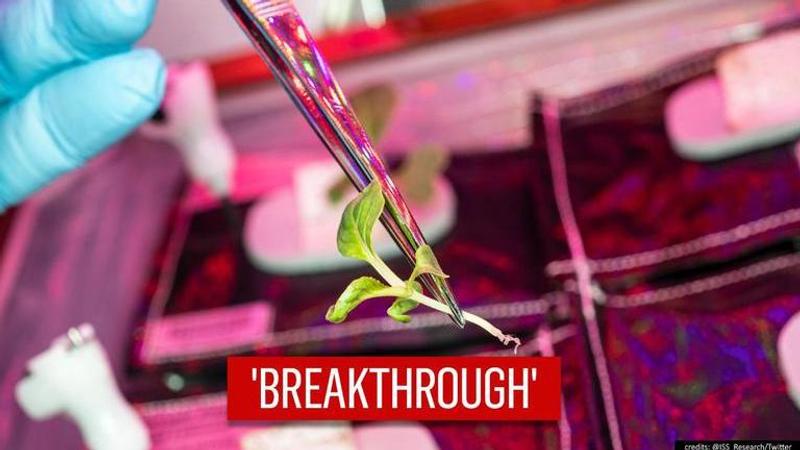Published 15:06 IST, January 30th 2021
ISS crew member executes first plant transplant in space despite being 'risky'
In a major ‘breakthrough’ for the plant research program at the International Space Station (ISS), first plant transplant has taken place 400 kms above Earth.

In a major ‘breakthrough’ for the plant research program at the International Space Station (ISS), the first plant transplant has taken place 400 kilometres above Earth at ISS’ Vegetable Production System (Veggie) facility. According to the NASA statement on January 29 about the “boon for the future of space crop production”, astronaut Mike Hopkins recently noticed that some plants were failing to exists at the station and therefore, he executed the first plant transplant within the establishment. The US space agency also explained that NASA researches crop production because plants can be beneficial for providing nutrients to the crew aboard the ISS.
It said in a statement, “NASA astronaut Mike Hopkins recently noticed some plants failing to thrive aboard the station, so he executed the first plant transplant within the agency’s Vegetable Production System (Veggie). NASA researches crop production in space because plants can provide nutrients to astronaut crews on long-duration missions, such as a mission to Mars.”
Hopkins in the crew member of the Expedition 64 and had arrived at the ISS for a six-month mission aboard the SpaceX Crew-1 mission. NASA elaborated that he was tending different varieties of mustards and lettuces in VEG-031, that is one of two Veggie experiments currently growing in orbit. It was when he noticed how mustards were growing normally in their “pillows” but lettuces did not. On January 14, Hopkins, with input from Veggie program scientists at Kennedy transplanted extra sprouts from thriving plant pillows into two of the struggling ‘pillows’ that contain clay-based growth media and fertilizer.
Why was transplant not attempted earlier?
The technique used by the Expedition 64 crew member, NASA said, is considered “risky” even for plants on Earth. Therefore, the US space agency said that it was not yet attempted on ISS plants until Hopkins took the step earlier this month. It further said, “ transplants – ‘Red Russian’ kale and ‘Extra Dwarf’ pak choi – are surviving and growing along with the donor kale and pak choi. The remaining red romaine lettuce and “Wasabi” mustard in the experiment are also ready for harvest.” However, it also acknowledged that plant scientists at Kennedy not yet have an answer about why some lettuce did not grow as it did in previous experiments.
“On Earth, this transplant technique is risky for plants in this delicate state, and NASA had never attempted it in a space experiment. But it worked,” NASA said.
Updated 15:04 IST, January 30th 2021



